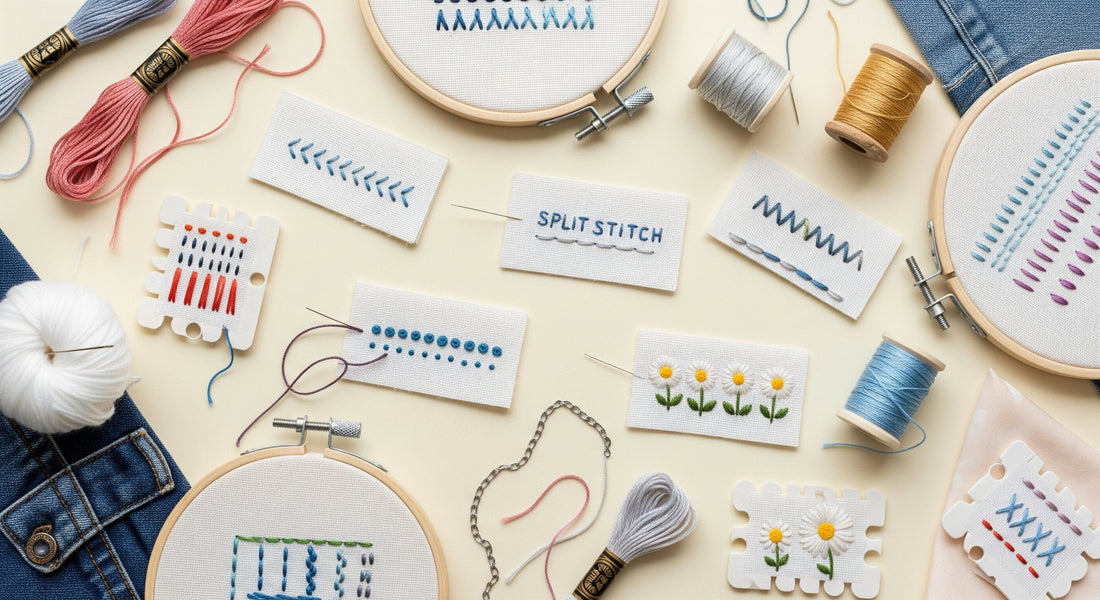
Basic Stitches Guide
Share
tep-by-Step Tutorials on Essential Embroidery Stitches
Learning the basic embroidery stitches is like learning the alphabet of embroidery. With just a handful of foundational techniques, you can create hundreds of beautiful patterns. In this guide, we’ll walk you through essential hand embroidery stitches, ideal for beginners and useful for advanced creators too.

1. Running Stitch
What it is: The most basic stitch—a dashed line.
How to do it:
- Bring the needle up through the fabric.
- Go down a short distance ahead.
- Come up again, leaving a gap.
- Repeat.
Use it for: Borders, outlines, or minimalist designs.
2. Backstitch
What it is: A continuous solid line great for outlines and text.
How to do it:
- Make one small stitch forward.
- Bring the needle up a short distance ahead.
- Go back into the end of the previous stitch.
Use it for: Lettering, borders, and outlining shapes.
3. Split Stitch
What it is: A textured line stitch.
How to do it:
- Stitch forward like a running stitch.
- On the next stitch, come up through the center of the previous stitch.
Use it for: Hair, vines, curved outlines.

4. Satin Stitch
What it is: A smooth, filled-in stitch for solid shapes.
How to do it:
- Outline the shape you want to fill.
- Make straight stitches close together from edge to edge.
Use it for: Petals, eyes, geometric shapes.
5. French Knot
What it is: A small, raised knot-like stitch.
How to do it:
- Bring the needle up.
- Wrap the thread around the needle 1–2 times.
- Insert the needle near where you came up.
- Pull slowly to tighten.
Use it for: Eyes, flower centers, texture.

6. Chain Stitch
What it is: A looped line that looks like a chain.
How to do it:
- Bring the needle up.
- Reinsert near the same spot.
- Come up a short distance ahead, catching the loop.
Use it for: Decorative lines, leaves, vines.
7. Lazy Daisy
What it is: A variation of the chain stitch used to make petals.
How to do it:
- Make a single chain loop.
- Anchor the end of the loop with a small straight stitch.
Use it for: Flowers and accents.
Tips for Practicing Stitches
- Use even-weave fabric (like linen or cotton).
- Choose contrasting thread colors to see your work clearly.
- Draw guidelines with water-soluble pens.
- Keep your hoop tight to avoid puckering.
- Practice each stitch in rows or circular patterns.
✨ Final Thoughts
Mastering these foundational stitches opens the door to endless embroidery possibilities. As you become more confident, try combining different stitches for texture, depth, and creative flair.